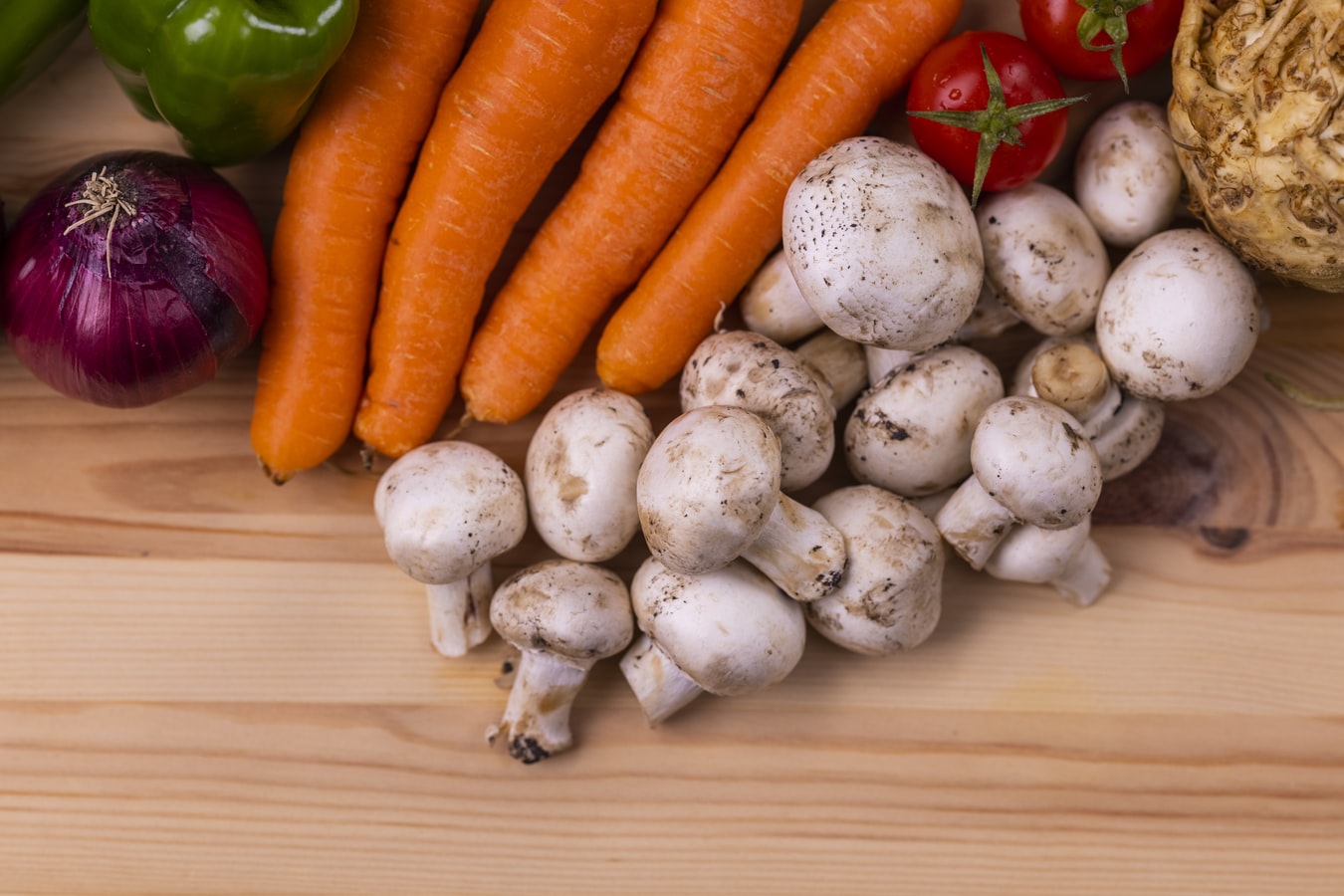Vitamin D is a powerful vitamin that has numerous benefits. There aren’t many foods that are rich in vitamin D as it is mostly developed from the skin and the sunshine, hence the name ‘the sunshine vitamin’. In this article, we will discuss the importance of vitamin D and how to optimise your levels all through the year.
Why Is Vitamin D So Important?
When you have a busy working week, it can be difficult to get outdoors so many go to different options. Although it is difficult, it is necessary to get out as much as possible. Not getting enough sun in your skin can result in low vitamin D levels.
Vitamin D can affect many things, but if you are low in vitamin D, it can seriously affect the way you feel and your performance in fitness as vitamin D is vital for athletes.
What Does Vitamin D Help?
- Increase bone health
- Increase muscle mass and strength
- Increase the size and number of the muscle fibres that are used for short bursts of speed and power
- Improve lower body strength
- Build strength in your legs (along with calcium)
- Prevent falls
- Regulate the immune system
If the body doesn’t produce enough vitamin D and you start to have low levels, it can increase the risk of some serious health issues including:
- Osteoporosis
- Cancer
- Depression
- Muscle Weakness
- Death
What Is The RDI Of Vitamin D?
To get the most out of vitamin D, it is recommended that the body should intake around 10-20 micrograms or 400-800 IU per day which can easily be achieved in the months of late March/early April to the end of September. The rest of the Winter and Autumn months can be achieved through a healthy balanced diet or vitamin D tablets to supplement what you can’t get. Although the RDI is 400-800 IU or 10-20mg, a study suggests that an intake of 1000-4000 IU or 25-100 micrograms is needed to maintain optimal blood levels.
What Affects How Much A Person Can Intake Vitamin D?
When people say that the sun is your best friend when it comes to vitamin D, they don’t mean you have to get burned or even tanned. Your body can produce the correct amount of vitamin D it needs in about half the time it would take for you to burn. Some factors should be taken into consideration when you are trying to increase your levels of vitamin D, including:
Time of Day: The time of day is a huge factor, as you know, the sun is hottest when it is at its highest point in the sky, meaning that it is best to get out in the sun around midday. The key thing to remember is if you are going to be spending extra time in the sun, you will improve your intake by staying hydrated and wearing sunscreen. This has multiple benefits including reducing the risk of sunstroke.
The Amount Of Skin Showing: This is probably a no brainer, but the more skin you show, the more intake of vitamin D you will produce. This is due to being more exposed to the sun. For example, if you have your top off, your chest and stomach will intake more than your arm.
Your Skin Colour: There is a little known fact that the darker your skin, the less vitamin D you will be able to produce. The lighter your skin, the better production, but this doesn’t come without its drawbacks. Pale skin burns very easily so make sure you get a good sunscreen to protect you from the harmful rays.
How Do You Get Vitamin D?
The sun is the best source of vitamin D and the body needs a constant source of vitamin D for a range of different purposes. Spending a short time in the sun can help your RDA dramatically, but having too much sun can be extremely damaging and can cause cancer like melanoma. If you have light skin, then the body only needs to be exposed for around 15 minutes, whereas people with darker skin can be out for a couple of hours before having to go in the shade. Ultraviolet B (UVB) is the ray that helps the skin to begin the process of creating vitamin D, other rays are damaging so it is best to stick to the RDA.
What Prevents You From Getting Vitamin D From The Sun?
There is a range of different factors that should be known that will prevent you from getting enough vitamin D intake. Controversially, sunscreen, although recommended to be worn when in the sun for a prolonged time, can actually limit the body’s ability to make vitamin D. The issue with this is the fact that we need sunscreen to protect us from the other harmful UV rays and without it, we can get sunburnt.
Many people get a driver’s arm when the sun is out as they get some tan on one arm if the window is down, however, the rest of the body will be absolutely fine as the glass blocks the UVB rays.
If someone has a weight problem and is overweight, then this can cause the skin to not work correctly. Some people’s skin is less able to make vitamin D and then others can’t release the vitamin D into their body due to the number of fat cells.
Many people find themselves at risk of a deficiency including:
- Older People
- People With Dark Skin
- People Who Are Obese
- People With Kidney or Liver Disease
How To Increase Vitamin D Levels?
Consume Fatty Fish & Seafood
Fatty fish and seafood are some of the highest sources of natural vitamin D. A 100 gram can of salmon provides up to 50% of your RDI.
Other Fish & Seafoods Rich In Vitamin D:
- Tuna
- Mackerel
- Oysters
- Shrimp
- Sardines
- Anchovies
Eat More Mushrooms
Mushrooms are unfortunately the only vegetarian source of vitamin D, and like us humans, it produces its vitamin D through the exposure to the sun. Humans create vitamin D3 and mushrooms create vitamin D2 which research suggests is not as effective or efficient as vitamin D3.
Eat Your Yolks
Egg yolks are another source of vitamin D, although this completely depends on how the chickens are raised, if they don’t get much sun they only produce around 2-5% of the RDI. If the chickens are fed vitamin D enriched food, then this can increase them to 100%.
Eat Fortified Foods
Due to the lack of foods that contain vitamin D, it is common practice for many food production lines to add vitamin D to many staple foods, this process is called fortification.
Fortified Foods Include:
- Cows Milk
- Plant-Based Milk (Rice, Soy, Almond, etc.) (Ve)
- Orange Juice
- Ready To Eat Cereals (Ve)
- Certain Yoghurts
- Tofu (Ve)
Now you know the importance of vitamin D and know the factors which help to improve your vitamin D levels, you can now enjoy the sun and know exactly how long you should be in the sun. Don’t forget to have sunscreen at the ready as you don’t want to burn and increase the risks of certain diseases.
Optimising Your Exposure To Vitamin D
Vitamin D is a powerful vitamin that has numerous benefits. There aren’t many foods that are rich in vitamin D as it is mostly developed from the skin and the sunshine, hence the name ‘the sunshine vitamin’. In this article, we will discuss the importance of vitamin D and how to optimise your levels all through the year.
Why Is Vitamin D So Important?
When you have a busy working week, it can be difficult to get outdoors so many go to different options. Although it is difficult, it is necessary to get out as much as possible. Not getting enough sun in your skin can result in low vitamin D levels.
Vitamin D can affect many things, but if you are low in vitamin D, it can seriously affect the way you feel and your performance in fitness as vitamin D is vital for athletes.
What Does Vitamin D Help?
- Increase bone health
- Increase muscle mass and strength
- Increase the size and number of the muscle fibres that are used for short bursts of speed and power
- Improve lower body strength
- Build strength in your legs (along with calcium)
- Prevent falls
- Regulate the immune system
If the body doesn’t produce enough vitamin D and you start to have low levels, it can increase the risk of some serious health issues including:
- Osteoporosis
- Cancer
- Depression
- Muscle Weakness
- Death
What Is The RDI Of Vitamin D?
To get the most out of vitamin D, it is recommended that the body should intake around 10-20 micrograms or 400-800 IU per day which can easily be achieved in the months of late March/early April to the end of September. The rest of the Winter and Autumn months can be achieved through a healthy balanced diet or vitamin D tablets to supplement what you can’t get. Although the RDI is 400-800 IU or 10-20mg, a study suggests that an intake of 1000-4000 IU or 25-100 micrograms is needed to maintain optimal blood levels.
What Affects How Much A Person Can Intake Vitamin D?
When people say that the sun is your best friend when it comes to vitamin D, they don’t mean you have to get burned or even tanned. Your body can produce the correct amount of vitamin D it needs in about half the time it would take for you to burn. Some factors should be taken into consideration when you are trying to increase your levels of vitamin D, including:
Time of Day: The time of day is a huge factor, as you know, the sun is hottest when it is at its highest point in the sky, meaning that it is best to get out in the sun around midday. The key thing to remember is if you are going to be spending extra time in the sun, you will improve your intake by staying hydrated and wearing sunscreen. This has multiple benefits including reducing the risk of sunstroke.
The Amount Of Skin Showing: This is probably a no brainer, but the more skin you show, the more intake of vitamin D you will produce. This is due to being more exposed to the sun. For example, if you have your top off, your chest and stomach will intake more than your arm.
Your Skin Colour: There is a little known fact that the darker your skin, the less vitamin D you will be able to produce. The lighter your skin, the better production, but this doesn’t come without its drawbacks. Pale skin burns very easily so make sure you get a good sunscreen to protect you from the harmful rays.
How Do You Get Vitamin D?
The sun is the best source of vitamin D and the body needs a constant source of vitamin D for a range of different purposes. Spending a short time in the sun can help your RDA dramatically, but having too much sun can be extremely damaging and can cause cancer like melanoma. If you have light skin, then the body only needs to be exposed for around 15 minutes, whereas people with darker skin can be out for a couple of hours before having to go in the shade. Ultraviolet B (UVB) is the ray that helps the skin to begin the process of creating vitamin D, other rays are damaging so it is best to stick to the RDA.
What Prevents You From Getting Vitamin D From The Sun?
There is a range of different factors that should be known that will prevent you from getting enough vitamin D intake. Controversially, sunscreen, although recommended to be worn when in the sun for a prolonged time, can actually limit the body’s ability to make vitamin D. The issue with this is the fact that we need sunscreen to protect us from the other harmful UV rays and without it, we can get sunburnt.
Many people get a driver’s arm when the sun is out as they get some tan on one arm if the window is down, however, the rest of the body will be absolutely fine as the glass blocks the UVB rays.
If someone has a weight problem and is overweight, then this can cause the skin to not work correctly. Some people’s skin is less able to make vitamin D and then others can’t release the vitamin D into their body due to the number of fat cells.
Many people find themselves at risk of a deficiency including:
- Older People
- People With Dark Skin
- People Who Are Obese
- People With Kidney or Liver Disease
How To Increase Vitamin D Levels?
Consume Fatty Fish & Seafood
Fatty fish and seafood are some of the highest sources of natural vitamin D. A 100 gram can of salmon provides up to 50% of your RDI.
Other Fish & Seafoods Rich In Vitamin D:
- Tuna
- Mackerel
- Oysters
- Shrimp
- Sardines
- Anchovies
Eat More Mushrooms
Mushrooms are unfortunately the only vegetarian source of vitamin D, and like us humans, it produces its vitamin D through the exposure to the sun. Humans create vitamin D3 and mushrooms create vitamin D2 which research suggests is not as effective or efficient as vitamin D3.
Eat Your Yolks
Egg yolks are another source of vitamin D, although this completely depends on how the chickens are raised, if they don’t get much sun they only produce around 2-5% of the RDI. If the chickens are fed vitamin D enriched food, then this can increase them to 100%.
Eat Fortified Foods
Due to the lack of foods that contain vitamin D, it is common practice for many food production lines to add vitamin D to many staple foods, this process is called fortification.
Fortified Foods Include:
- Cows Milk
- Plant-Based Milk (Rice, Soy, Almond, etc.) (Ve)
- Orange Juice
- Ready To Eat Cereals (Ve)
- Certain Yoghurts
- Tofu (Ve)
Now you know the importance of vitamin D and know the factors which help to improve your vitamin D levels, you can now enjoy the sun and know exactly how long you should be in the sun. Don’t forget to have sunscreen at the ready as you don’t want to burn and increase the risks of certain diseases.















